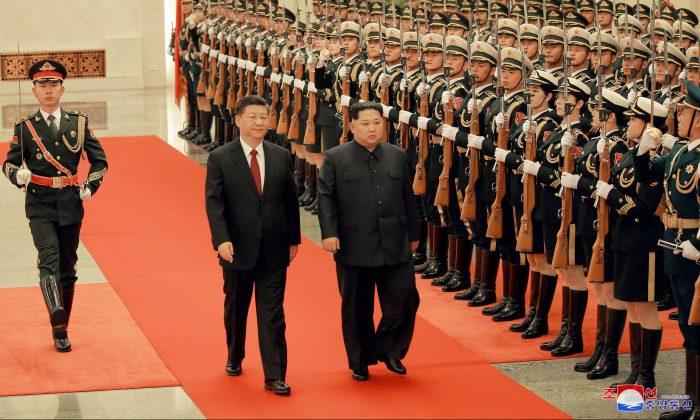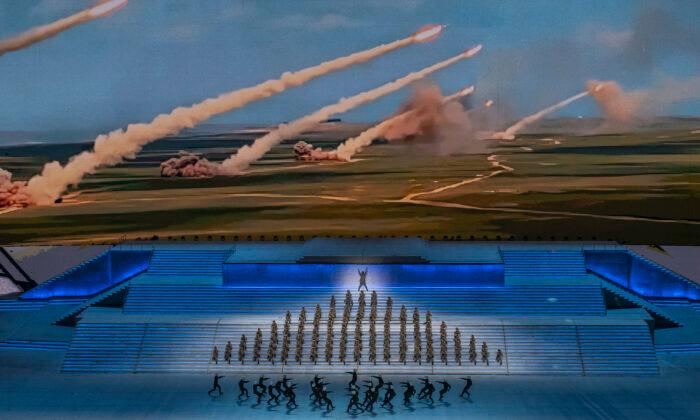On the morning of May 4 (Korean time) at its test site in Wonson, North Korea tested a new nuclear capable solid-fuel short range ballistic missile (SRBM), ending a 522 day missile testing moratorium that held since last intercontinental ballistic missile (ICBM) test on Nov. 29, 2017. This missile was reported to have flown out to 240 kilometers (149 miles).
As with many previous missile tests, Pyongyang almost immediately released imagery allowing for a closer look at this new missile. Much subsequent commentary noted the SRBM’s similarity in shape and dimensions to Russia’s 500-600 kilometer range 9K720 Iskander, also known by its North Atlantic Treaty Organization (NATO) code SS-26 Stone.
However, given North Korea’s longstanding missile technology relationship with the China Aerospace Science and Industry Corporation (CASIC), and this new SRBM’s similarity to a new CASIC missile, there is also a possibility that Pyongyang’s new SRBM was assisted by China.
North Korea first revealed this new SRBM at its Army Day Parade on Feb. 8, which at the time was judged to be similar to the Iskander. New North Korean imagery of this test released on May 4 shows that the missile bears an even closer similarity to the Iskander, especially in its proportions and in the shape of the bi-conic missile fuselage design.
An image of the North Korean SRBM was released by the Korean Central News Agency (KCNA) on May 4.
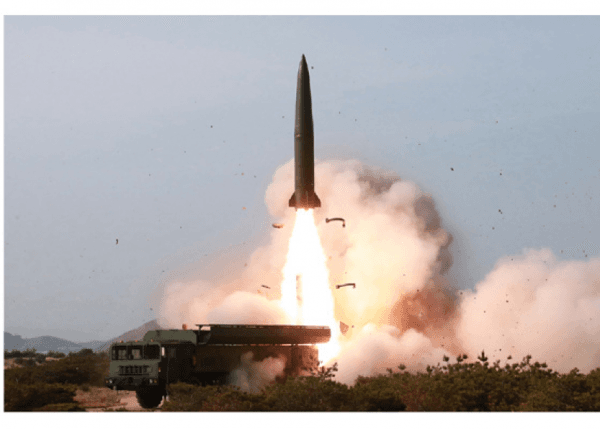

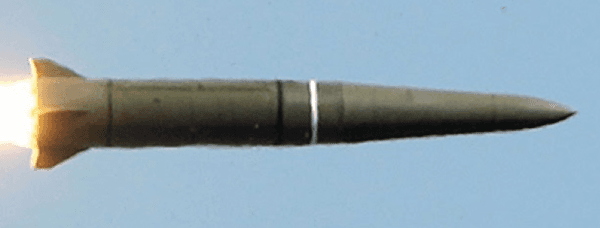
Furthermore, the North Korean SRBM appears to use a launch erector employing detachable metal straps to hold the missile in place, in a manner very similar to the Iskander.
However, the North Korean missile is also broadly similar to the China Aerospace Science and Industry Corporation (CASIC) CM-401 anti-ship ballistic missile (ASBM) short-range ballistic missile revealed at the November 2018 Zhuhai Airshow. The CM-401 also has a similar bi-conic nose shape and proportion to the North Korean SRBM, and its export version has an advertised range of 290km.
With an image of the North Korean SRBM (top), below is a CASIC poster image of their CM-401 anti-ship ballistic missile displayed at the 2018 Zhuhai Airshow, which has a fin and missile steering vane structure closer to that of the North Korean SRBM.

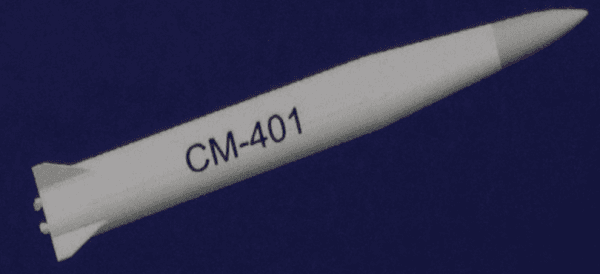
Since 2011, CASIC has been the major source of North Korea’s large 16-wheel and 18-wheel TELs which carry its Hwasong-14 and Hwasong-15 liquid-fueled intercontinental ballistic missiles (ICBMs) aimed at the United States. CASIC also has extensive experience selling solid-fuel SRBMs to Pakistan and other countries.
In its April 2017 military parade, North Korea displayed a truck-based TEL and a 16-wheel CASIC TEL, armed, respectively, with launch tubes for a medium-range and an intercontinental range solid-fuel ballistic missile. This at least points to the possibility that CASIC has transferred solid-fuel missile technology to North Korea.
The North Korean transporter-erector-launcher (TEL) seen in the May 4 imagery shows a much closer similarity to that of the Iskander’s eight-wheel MZKT-79306 Astrolog truck. In the February 2018 parade, the North Korean SRBM was carried by a slightly smaller eight-wheel TEL.
But in its sale of short and medium range ballistic missiles to Pakistan, CASIC took care to design unique TELs that did not resemble in-service Chinese TELs, until it dispensed with this precaution earlier in this decade. Russia sold technology to South Korea for its KM-SAM 4th generation anti-aircraft system and is believed to have sold technology to South Korea to help develop its Hyunmoo-2 SRBM—which also resembles the Iskander. If true, this augers against Moscow’s sale of Iskander technology to Pyongyang.
The Iskander is designed to carry a small tactical nuclear warhead, and China is also known to have a small number of SRBMs armed with small nuclear warheads. If North Korea’s new SRBM does have significant foreign technology content, there is a possibility that it too eventually may be armed with a new small nuclear warhead.
Though confirmation of foreign assistance for North Korea’s new SRBM likely will have to await disclosures by the South Korean or U.S. governments, CASIC’s longstanding missile technology relationship with North Korea, and the new SRBM’s similarity to CASIC’s CM-401, point to the possibility of a significant Chinese role in North Korea’s new SRBM.
Helping North Korea to obtain nuclear-armed SRBMs to compliment its longer-range liquid fueled intermediate and intercontinental-range missiles would be consistent with China’s goals of creating conflict between South Korea and the United States, undermining Japanese and South Korean confidence in American extended nuclear security guarantees, and hastening the breakdown of South Korea’s and Japan’s alliances with the United States.
